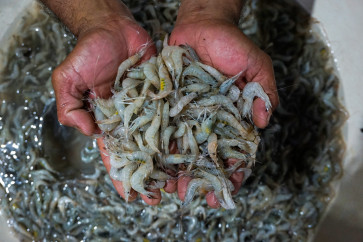Popular Reads
Top Results
Can't find what you're looking for?
View all search resultsPopular Reads
Top Results
Can't find what you're looking for?
View all search resultsSulawesi's `warriors' threatened by extinction
Deep jungle is no longer safe for Sulawesi's endangered "warriors" - the civets - so nicknamed for their daring agility, climbing skill and other unique endowments
Change text size
Gift Premium Articles
to Anyone
Deep jungle is no longer safe for Sulawesi's endangered "warriors" - the civets - so nicknamed for their daring agility, climbing skill and other unique endowments.
The protected species - discovered over a century ago but less popular than anoa or dwarf buffaloes (Bubalus sp) and babirusa or hog deer (Babiroussa babirusa) - is famed for roaming fearlessly at night.
The nocturnal animal sleeps or rests during the daytime under shady trees or deep in the undergrowth. It never roams in a pack, roving in pairs at most or sometimes alone.
As the only endemic carnivore of the region, Sulawesi civets are fond of hiding in thickets, stalking their prey with almost inaudible steps.
Their small and sharp teeth, like those of cats, as well as spiky claws function as weapons against other predators or prey while serving also as a means of tree climbing.
"Their skill in going up and down trees with their backs straight further justifies their reference as the warriors of the Sulawesi jungle," said Ismet Khaeruddin, director of Nature Conservancy, Central Sulawesi.
He said that Sulawesi civets were found, though rarely, in Lore Lindu National Park, Tokalekaju mountain range, the west coast of Donggala, Mount Ambang, Mount Rantemario, Mount Sojol and in several other areas.
They feed on small mammals like rats, squirrels, piglets, small birds, fowls and eggs, in addition to fruits like bananas and palm or sugar palm (Arenga pi*nata) fruits. Feeding at night, civets rely on their excellent night vision and are capable of detecting their prey from only a few meters' distant.
Bigger than those from other regions, Sulawesi civets are seen as giant civets (Macrogalidia musschenbroekii), identified by their blackish-brown skin.
The other smaller species with reddish-gray skin (Viverra tangalunga) can be found in Sulawesi as well as on other islands. People around Mount Sojol nature reserve call civets cingkalung, while the Lore ethnic people in Lore Lindu National Park in Central Sulawesi know them as hulaku.
Compared with Viverra, Macrogalidia civets are as big as domestic dogs, reaching an average weight of 10 kilograms and a length of 130 cm - from head to tail. They are nearly as large as Sulawesi cuscuses (Phalanger celebensis) which are the island's other typical mammal of the bear lineage.
Viverra civets are smaller and shorter, the size of adult domestic cats, with an average weight of only seven kilograms. However, both have the physical appearance and basic nature of cats, with their liking for night roaming and inclination to climb trees and to play, thus having some ties of feline kinship to the viverridae family.
Ismet said some villagers in Central Sulawesi believed in civets' hypnotic power in their nocturnal hunting operations. Simply by staring and waving their tails at the drowsy chickens, within minutes the chickens would fall down and be carried off to the woods. But pythons, commonly found in Sulawesi forests, are actually the main predator of fowls.
The wide distribution of sugar palm trees in different forest areas of Sulawesi is inseparable from the role of civets in spreading the seeds of sugar palm fruits.
"So, one of the best indications to identify civets' existence is the presence of numerous sugar palm trees.," Ismet said.
Apart from being a source of animal feed, sugar palm trees also produce juice processed by villagers into brown sugar, while their leaves are used for roofs and their young fruit preserved as sweets.
Two Western researchers, Chirs Wemmer and D. Watling, conducted a survey of the habitat and life of civets in the national park and managed to take their pictures using infrared technology, resulting in a book entitled Ecology and the Sulawesi palm civet, Macrogalidia musschenbroekii (1986).
The document served as a resource book for following conservationists, such as those compiling The Ecology of Sulawesi, published by Gajah Mada University Press (1987); Anthony J. Whitten along with Muslimin Mustafa and Gregory S Henderson, however, barely described Sulawesi civets.
Behoa people in the highlands of Lore in the Poso regency believed that their ancestors were fond of raising civets like dogs for boar and deer hunting.
But civets turned out to be difficult to breed and demanded too much attention compared with domestic dogs. Any delay in feeding them would make them attack village cattle and even injure people, particularly if - according to local myth - the number of civets exceeded 99, so the tradition has now been abandoned.
Data obtained from the Lore Lindu National Park show that in the western coastal zone of Central Sulawesi, civets are mostly trapped by accident. Residents frequently set up snares to catch jungle fowls but civets get entangled instead.
Unfortunately, civet's endangered status appeals to some people, who began to be interested in preserving them as stuffed animals in glass cases for souvenirs to decorate sitting rooms.










